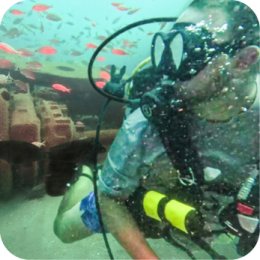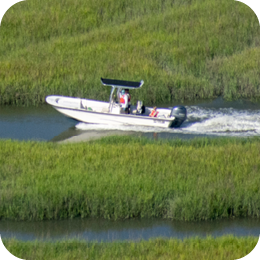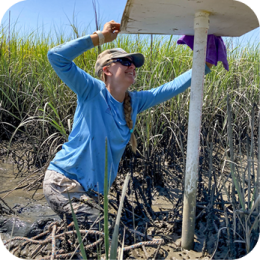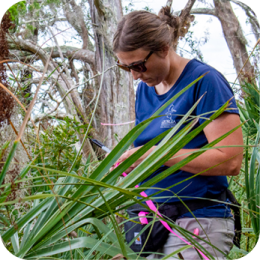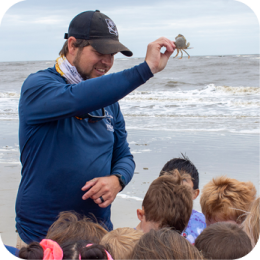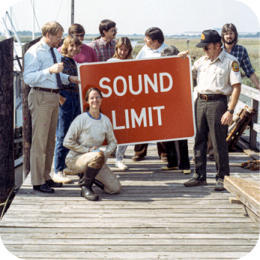The mission of CRD takes its staff throughout the Georgia coast. Whether we’re monitoring wetlands on Sapelo Island, surveying permit compliance from the air, or diving to inspect artificial reefs miles offshore, we’re never far from the water. Two new vessels that recently joined the CRD fleet will help staff achieve those diverse missions by providing the perfect platform for our mission of balancing protection of the coast’s resources and the growth anticipated along our 105- mile coast.

RESEARCH VESSEL REID W. HARRIS

The R/V Reid W. Harris was built by Wesmac Custom Boats in Surry, Maine. Her keel was laid Nov. 19, 2018 and launched June 3, 2020. The vessel is named after the late State Rep. Reid W. Harris, who sponsored the Coastal Marshlands Protection Act of 1970. Harris, who lived on St. Simons Island was concerned about a proposal to mine phosphate from Georgia’s marshes and beaches and drafted the bill to prevent such activity. The Coastal Marshlands Protection Act has been hailed as a model for conservation and because of this law, Georgians today enjoy vast views of the state’s more than 360,000 acres of pristine marshlands.
The Harris entered service after a christening at CRD in July 2020. The vessel’s sponsor, Betsy Harris, who broke the ceremonial champagne bottle on its bow, is the granddaughter of the late state representative. The Harris replaced the R/V Anna, which served CRD from 1970 until 2020. The Harris will continue the mission of ecological monitoring along Georgia’s coast. The Harris was ordered in 2018 and cost approximately $1.5 million. At 54-feet in length,the vessel has a 17-foot, 6-inch beam, a 6-foot draft, and displaces 65,000 pounds. Its 1,000 horsepower Caterpillar engine can propel the vessel to cruising speeds of more than 16 knots.
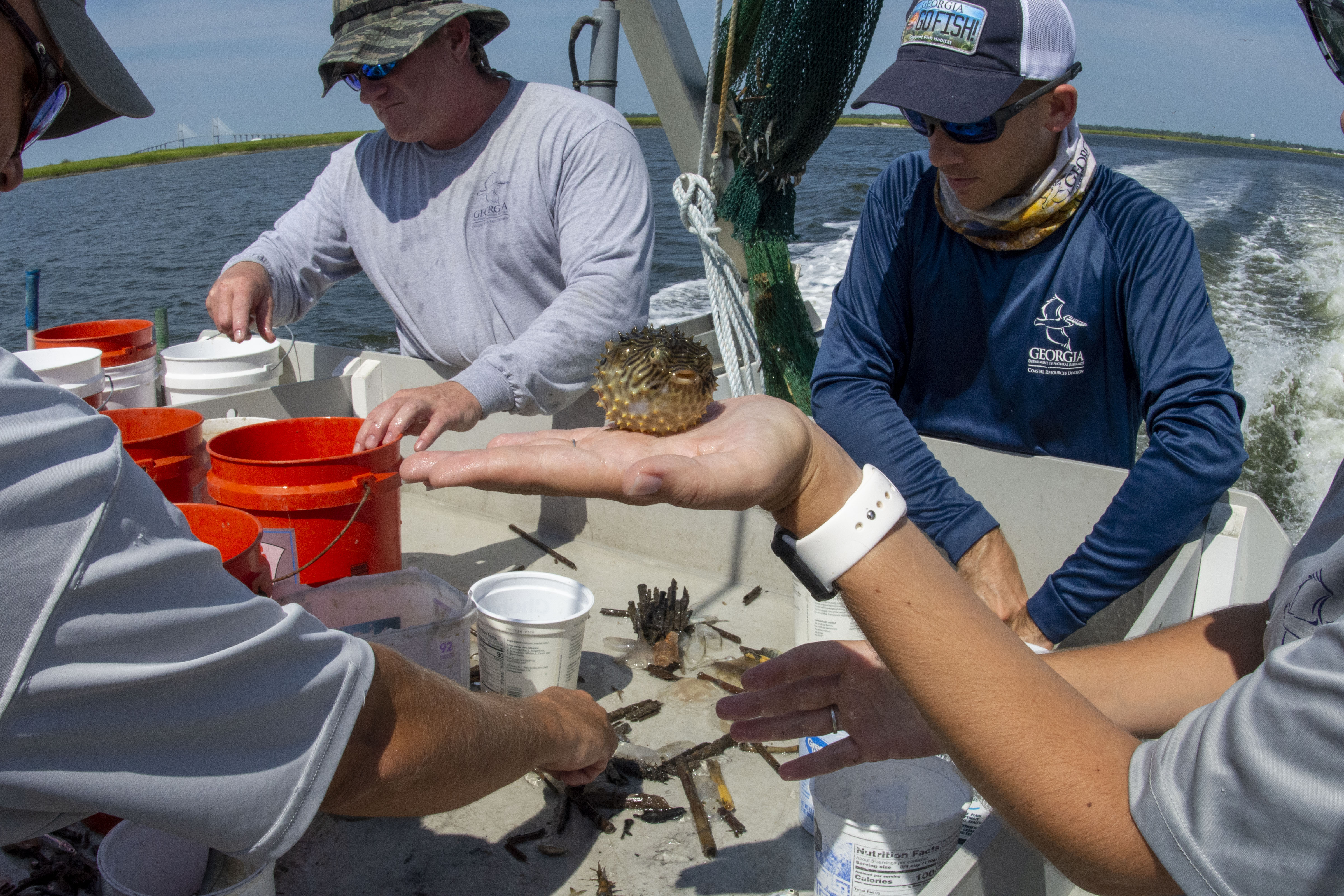
The Harris can generate its own power with a 16- kilowatt Northern Lights generator. She has a fuel capacity of 1,200 gallons and can carry 100 gallons of potable water. She is equipped with a hydraulic aft boom which can lower to deploy trawl fishing gear as well as a stainless-steel hydraulic winch for the deployment and retrieval of a 40-foot otter trawl shrimp net. Previously on the Anna, crews trawled the net from the side of the vessel. With the new Harris, the trawl can be conducted off the back of the boat, making it easier to handle. Additionally, the introduction of new aluminum doors make the net lighter and easier to work with.
The Harris can carry up to 15 passengers, but normally has a crew of six when out sampling during the Ecological Monitoring Trawl Survey (EMTS). The vessel has a spacious climate-controlled cabin with bench seating. The galley has a full-size refrigerator, stove and microwave. The bathroom, or “head,” has its own sink, toilet, and shower. The Harris also has sleeping quarters with four bunks for overnight ventures. CRD crews generally spend one night aboard each month.
The vessel’s primary role is to conduct the EMTS, sampling 36 stations each month in Georgia’s rivers, sounds, and offshore waters. The trawl is pulled approximately 15 minutes at each station. The catch of shrimp, crabs, and fish is sorted, measured and weighed. All data is then entered into an onboard laptop. This critical in monitoring the health of the ecosystem, comparing current and past data. The survey also plays an important role in determining the best time to open or close Georgia’s state waters to shrimping.
Click here to view more photos.

RESEARCH VESSEL GLYNN
The second new vessel in CRD’s purview is the R/V Glynn. Also built by Wesmac Custom Boats in Surry, Maine, her keel was previously laid to become a Lobster boat for Capt. Linda Greenlaw, a best-selling author of books with maritime themes and the the few female swordfishing boat captain on the East Coast of the United States. She was featured in the 1997 book “The Perfect Storm” and the film by the same name.
CRD ordered the partially completed vessel in January 2020 to be completed and converted to a longline survey vessel at a cost of $848,200. The Glynn was received and entered service in November 2021, replacing the R/V Marguerite and continuing the mission of conducting the Coastal Longline Survey for sharks and adult red drum, artificial reef habitat monitoring, and sonar array studies. The Glynn is a 46-foot Maine lobster-style vessel with a 14-foot, 6-inch beam.
It has a draft of nearly 5 feet and displacement of 26 gross tons. Its 700-horsepower Scania diesel engine can propel the vessel to cruising speeds of more than 16 knots. The Glynn can generate its own power with a 6-kilowatt Northern Lights generator. It has a fuel capacity of 650 gallons and can carry 40 gallons of potable water. She is equipped with a hydraulic longline winch with 3,000-foot line and 60 snap gangions with 60 15/0 circle hooks.
The Glynn can carry up to 14 passengers, but normally has a crew of six when out sampling. The Glynn’s primary role is Coastal Longline Survey for adult red drum and sharks, which encompasses state and federal waters off the coast of Georgia. The Glynn’s secondary role is conducting diving operations to monitor the artificial reef fish habitat with placement and periodic inspection of sonar arrays. The Glynn is the primary DNR vessel on scene while monitoring the off load and placement of artificial reef material.


